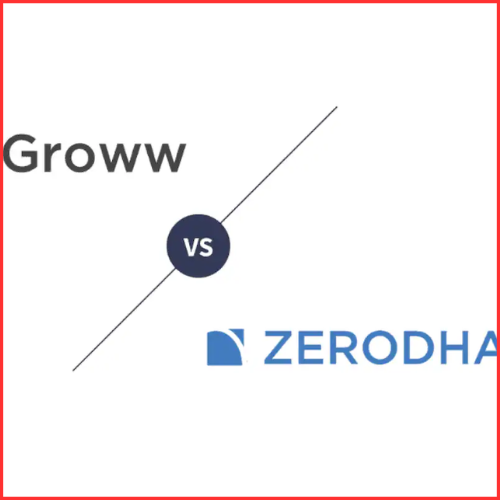Insta Cart is a grocery delivery and pick-up service that operates in the United States and Canada. To deliver services, a website and a smartphone app are employed. Customers can order groceries from participating supermarkets and have a personal shopper buy for them at their leisure. Apoorva Mehta, Max Mullen, and Brandon Leonardo founded the company in 2012.
After seeing an empty refrigerator, Mehta was inspired to start this new business. He launched Instacart after realizing that he could purchase anything online except groceries.
Apoorva Mehta, the CEO, and Co-Founder of Instacart, started 20 businesses in the early 2010s as part of a wave of entrepreneurial energy, including a social network for attorneys and an ad network for gaming organizations. Using his skills as an Amazon supply chain engineer, Mehta devised the strategy that targeted his previous company.
Do you know how Instacart works?
Instacart’s primary business strategy is centered on the economy. It connects clients with local grocery retailers to provide on-demand grocery delivery. It gives grocery businesses a platform to represent and sell the products available in their stores. Customers may download the app to their phone and browse a list of grocery retailers that offer on-demand food delivery. They may use on-demand grocery delivery and ordering services to browse for items, select the quality they want to buy, confirm the order, and pay. The shoppers are considered independent contractors since they get the order without going out to buy the products they desire. On each request, Instacart collects delivery and service fees from grocery shops.
Instacart is the North American market leader in online grocery and one of the fastest-growing e-commerce startups. In as little as an hour, Instacart’s same-day delivery and pickup services deliver fresh groceries and everyday staples to busy people and families across the United States and Canada. Since its inception in 2012, Instacart has become an indispensable service for millions of families, while also providing an immediate and flexible income opportunity for hundreds of thousands of shoppers across North America. The firm works with over 350 shops and distributes from over 25,000 locations in over 5,500 cities across North America. Instacart is now available to more than 85% of US households and more than 70% of Canadian households.
Apoorva Mehta is a person. Mehta was working as a supply-chain engineer for Amazon in Seattle in 2010. He quit his job and moved to San Francisco with the intention of starting his own business, but he had no specific plans. Over the course of two years, his business ventures ranged from a social network for attorneys to an advertising firm for the gaming industry, before launching Instacart in 2012.
Growth and Profitability
Instacart’s revenue grew steadily, from $525 million in 2018 to $735 million in 2019. However, after 2020, when the epidemic shut down the whole planet, Instacart saw phenomenal growth.
Instacart is predicted to generate $1.5 billion in revenue and $35 billion in sales by 2020. Simultaneously, the company’s personal shoppers rose. Because, when people began to lose their jobs, they saw Instacart as both a great career opportunity and a quick way to make money.
The app only garnered about 300,000 new customers in the first half of 2020, and this figure is expected to climb in the coming months. When the COVID struck, the platform appeared to be recovering from a $300 million loss in 2019, with the company turning a $10 million profit for the first time in April.
During the pandamic, Instacart’s overall market share increased from 8.9 percent to around 17.2 percent in early June 2020, which looked to be an inconceivable feat for a firm as tiny as Instacart prior to the outbreak.
Instacart beat Walmart and Amazon to become the third most popular online grocery store in the United States by October.
The company currently has over 500 retail partners, including 7-Eleven and Sephora, and distributes from about 8000 store locations across the United States and Canada.
Instacart’s Business and Revenue Models
By connecting consumers with personal shoppers, Instacart leverages a shared economy-based business model to provide hyper-local on-demand food delivery. Instacart does not operate a grocery store; rather, it acts as a marketplace where grocery shops may sell their items.
Customers may use the mobile app to select their favourite grocery shop, browse through supermarket goods, enter the quantity they want, and confirm their order. The shoppers are self-employed or part-time Instacart employees that take the customer’s order, shop for the things they want, and bring them to their door. Customers pay with the app and receive their things without leaving their homes.
The Instacart Future
Instacart is a major competitor to Google and Amazon, particularly when it comes to food buying. The grocery delivery platform’s one-time delivery promise has made it the most favored and robust option in the Canadian and United States markets. With more than $1 billion in capital, Instacart has no reason to turn back; it has several market prospects to pursue, assuring a stronger future. Instacart has secured one place and established itself as America’s most promising startup. Following the success of Instacart, many companies are looking forward to establishing an Instacart-like grocery delivery software script that will assist them in meeting the demands of clients by delivering goods on demand straight to their doorsteps.
Strategy for Instacart
The business concept of Instacart is a hybrid of the Airbnb and Uber models. Investigate the Instacart technique to have a deeper understanding of the fusion. The Instacart business model, like those of other company aggregators, comprises of many segments. Investigate the following segments to determine which are included in the business model:
Users may use the app to order items from local supermarket delivery shops.
To place the order, they can use a web-based interface on a desktop, laptop, or tablet.
Users may schedule their purchase request and pay online throughout the checkout process.
Delivery Providers: Customers’ orders are forwarded to delivery providers.
Providers who are stationed near supermarket delivery establishments ensure that they save time.
They pick up orders from retailers and bring them to customers’ homes.
Aside from the base wage, they receive a gratuity from consumers for successful deliveries.
Stores: Instacart has collaborated with the majority of city superstores.
Online sales may generate a lot of money for stores.
It assists them in expanding their company reach by meeting the demand for new clients.
To summarize
Customer demand is driving an increase in online grocery purchasing. According to Nielson’s research, one-fourth of internet customers purchase for groceries online, with 55% planning to do so in the future. And, in order to meet market demand, grocery businesses are going online with the help of an app development company. A unique business model and technique, such as Instacart, can help your company adapt to changes in the competitive industry. It is worthwhile to use the Instacart business model when beginning an online delivery service. You may acquire ready-to-use software like Instacart for a rapid online grocery business launching for a low cost.















